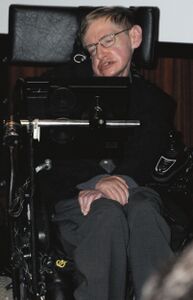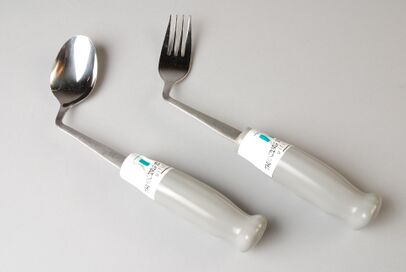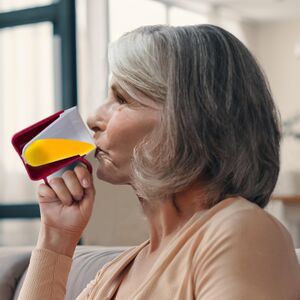Technological Aids for Self-Care and Environmental Adaptations
Original Editors - Lucinda hampton
Top Contributors - Lucinda hampton, Mahbubur Rahman, Naomi O'Reilly, Kim Jackson and Ewa Jaraczewska
Introduction[edit | edit source]
Steven Hawking was a valuable role model for technological solutions for those with disabilities. With his recognizable wheelchair and computer-generated voice, he demonstrated the value of technological solutions. For Example, liberating the voice of those with physical and communication disabilities. Assistive technologies facilitate mobility and other functional abilities, like eating, seeing, hearing, etc. It includes the basic things to advance devices. From utensils with large handles to speech-generating devices, all are forms of assistive technology. It reduced and diminished the disparities between people with different abilities.[1]
What is Self Care?[edit | edit source]
According to a recent study, self-care is defined as "the ability to care for oneself through awareness, self-control, and self-reliance to achieve, maintain, or promote optimal health and well-being.'' But the definition evolves over time and may be relative to the person to whom it may be defined. It may differ from person to person and condition to condition. For example, some people may need to spend more time on self-care and engage their caregiver, but others may need less.[2]
Examples[edit | edit source]
Assistive technology for activities of daily living are variety of products, devices, and equipment used in everyday functional activities by the person with disabilities or the elderly. Potential activities of daily living which can be make more easier, safer and quicker by assistive technologies may be categories, but are not only included to,
- eating,
- cooking,
- grooming,
- bathing and showering,
- dressing,
- transferring to and from beds, vehicles, or wheelchairs,
- writing and basic communication,
- environmental control,
- home management,
- time management,
- organization and scheduling,
- money management,
- shopping,
- leisure/recreation/play,
- community living, and
- school and work activities.
The example may described simply by reachers, modified utensils, printing with large size fonts, etc. Such technologies should both, environment and person friendly to adapt the environment to support identified needs, choice, and control.[3]
Some pictures of assistive technologies for self care added below for better understanding of the concept,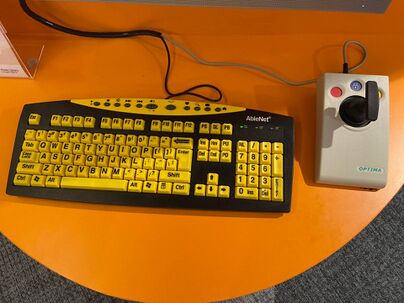
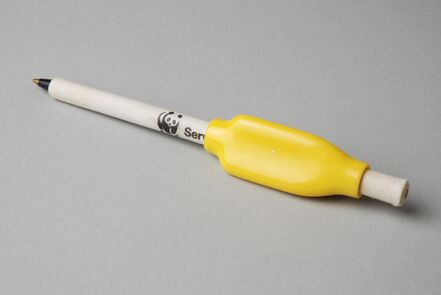
- Physical modifications in the built environment, including ramps, grab bars, and wider doorways to enable access to buildings, businesses, and workplaces.
- Mobility Products.
- Adaptive switches and utensils to allow those with limited motor skills to eat, play games, and accomplish other activities.
- Devices and features of devices to help perform tasks such as cooking, dressing, and grooming; specialized handles and grips, tub benches abs shower stools, devices that extend reach, and lights on telephones and doorbells.
- Assistive Technology.[4]
- Wheelchairs and Walking Aids
- Posture control aides for cerebral palsy
- Pressure mattress
- Cushions
- Sling or hoist
- Complex home modifications
- Mobile or ceiling hoist
- Reminders applications[5]
Home adaptation, using these devices, is a complex procedure whose implementation involves the execution of multiple actions.
- Detection of individual needs
- Contact with several specialised professional profiles
- Visits to orthopaedics or companies in the sector
- Selection of the right device
- Search for financing options
- Purchase and installation of the selected assistive products[6]
Cost Barriers[edit | edit source]
Despite the growing need, one of the primary barriers to obtaining needed or wanted self-care and environmental products is cost. To date, a large number of people with disabilities cannot afford them and get no reimbursement for them through existing funding systems. For example tub benches have been found to support function and safety, they are typically not funded through third-party reimbursement systems, as they are considered “optional” and do not qualify as durable medical equipment. In response, a number of initiatives have occurred to increase access. In the United States, a national network of alternative financing programs offers a consumer-directed program and a range of alternative financing strategies to increase access to funding for these products and other technologies; Canada and Sweden have implemented delivery systems that offer more extensive access to these products as part of integrated community living plans[7].
References [edit | edit source]
- ↑ Blair ME. Stephen Hawking as an accidental ambassador for assistive technologies. The Conversation. 2018 [cited 2024 Feb 18].
- ↑ Martinez N, Connelly C, Perez A, Calero P. Self-care: A concept analysis. International Journal of Nursing Sciences. 2021 Oct 10;8(4):418–25.
- ↑ Hammel J. Aids for activities of daily living. Encyclopedia Britannica. 2023.
- ↑ NIH Assistive Devices Available: https://www.nichd.nih.gov/health/topics/rehabtech/conditioninfo/device (accessed 10.7.2021)
- ↑ Ability action.Assistive Technology available:https://abilityactionaustralia.com.au/assistive-technology-equipment-aids-occupational-therapy/ (accessed 10.7.2021)
- ↑ Plos one Exploring the use of assistive products to promote functional independence in self-care activities in the bathroom Available: https://journals.plos.org/plosone/article?id=10.1371/journal.pone.0215002 ( accessed 10.7.2021)
- ↑ Britannica AIDS for ADL Available:https://www.britannica.com/topic/aids-for-activities-of-daily-living (accessed 10.7.2021)
